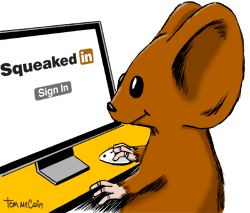 Webinars are inexpensive compared to face-to-face meetings. But like email and other low-cost electronic options, easy entry often lures ill-prepared companies into the arena. Use these tips to create and present webinars that will meet your audience’s highest expectations.
Webinars are inexpensive compared to face-to-face meetings. But like email and other low-cost electronic options, easy entry often lures ill-prepared companies into the arena. Use these tips to create and present webinars that will meet your audience’s highest expectations.
Do
- Select your topics and presenters carefully.
- Evaluate your internal capabilities objectively—outsource when needed.
- Keep your presentation to one hour or less—including Q&A.
- Start and end the webinar on time.
- Seed questions to ensure covering important points and to encourage participation.
- Learn to take advantage of the technology options—drawing tools, polling surveys, etc.
- Promote your webinar beyond a homepage blurb—use email, direct mail, banner ads, social media, etc.
- Be wary of using a wireless connection by a presenter.
- Consider having a few friendly faces in the presentation room—presenters benefit from seeing reactions and playing off the “audience.”
- Use professionally created slides—be sure to review outside presenter’s slides and be prepared to offer assistance.
- Develop a lead follow-up plan—demand accountability from the sales team.
- Record and archive your webinar—many executives appreciate and use the on-demand option.
- Explore opportunities to generate passive income—selling a recorded series as a set, for example.
- Rehearse and then rehearse again.
Don’t
- Use inexperienced presenters as featured speakers—give them a smaller role until they get a few webinars under their belts.
- Underestimate the investment of time to pull off a professional presentation.
- Use webinars for target audiences that may not be tech savvy.
- Dismiss the value of a good moderator to the webinar’s success.
- Think that webinars will completely replace the need for face-to-face contact.
- Assume that webinar leads are conversion ready—they are more likely in the exploratory stage and will require further nurturing.
- Fail to add qualified attendees to your marketing database.
- Forget to invite your customers to webinars.
- Use an unproven webinar delivery platform provider—they are not all created equal.
- Overburden the moderator with the technology requirements—consider a person for each role.
- Fail to follow up with registrants who don’t attend the webinar.
- Overlook the value of a webinar as a training tool for your own people.
- Forget to continue promoting your recorded webinar.
- Neglect to collect some qualifying information at registration—use checklists and limit the number of questions to three or four.
![]()
Pick a Strong Webinar Delivery Platform Provider. The last thing you want is unreliable technology and support when you’re doing a webinar. You look bad and people abandon the event. We really don’t have favorites, and you may uncover a great provider on your own, but we suggest at least looking into these proven companies:
For more information, email Julia Moran Martz.
![]()
By Larry Bauer







